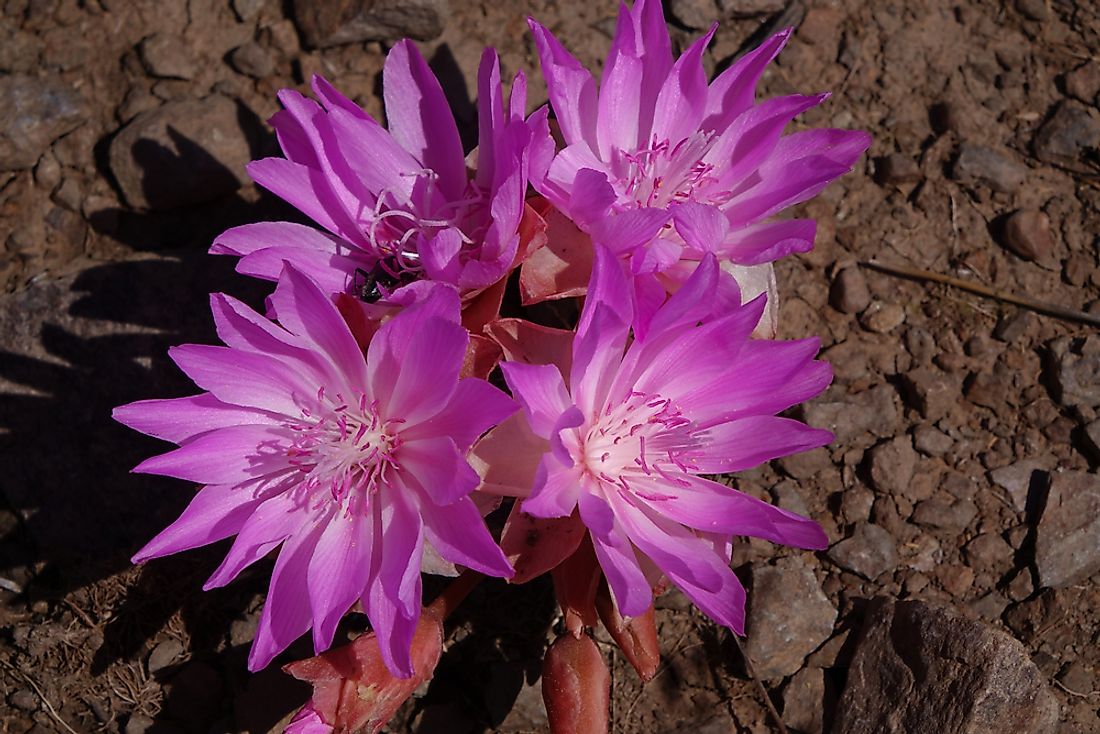What Is The State Flower Of Montana?

The US state of Montana is located in the country’s northwestern region. Nicknamed "The Treasure State," "Big Sky Country," "The Last Best Place," and “The Treasure State," the state was admitted to the union back on November 8, 1889, which made it the fourth state to be admitted. The capital city of the state is Helena, the largest city is Billings, and the population estimate from 2017 say that Montana is home to about 1,050,493 people. Like any other state in the US, Montana has a number of state symbols such as the flag, the state flower, and the state animal. The official state flower of Montana, which was chosen back in 1895, is the bitterroot with the scientific name Lewisia rediviva.
Description
The bitterroot flower is small and belongs to the family Montiaceae. The perennial herb has a unique ability to grow from roots that appear dead and dry. The taproot is usually fleshy while the base may be simple or branched. The stems of the flowers do not have leaves while the flowers themselves may have five or six sepals with an oval shape. The flowers can have a number of colors ranging from whitish to a lavender or deep pink hue. Usually, blooming occurs between April and July. The petals of the flower have an oblong shape and a length of between 0.7 and 1.4 inches. Upon maturity, the plants produce seeds that have the shape of an egg.
Range
During their bloom season, the flowers can be found in sagebrush plains as well as the foothills of mountains in the western and south central sides of Montana. Native to the western region of North America, the flower can also be seen growing in places like grasslands, forests, and open bushlands. The range of the flower begins at the southern region of British Columbia all the way to Oregon and Washington. After that, the range extends further to southern California’s Cascade Range then heads east to northern Colorado, northern Arizona, western Montana, and Wyoming. The perfect soil for its growth is one that is dry and gravelly or rocky.
History and Culture
In the past, people knew the flower by other names such as racine amère for the French while Native Americans called it spetlum, spetlem, nakamtcu, and mo'ôtáa-heséeo'ôtse. In the case of the Flathead Indians and the Shoshone, the roots of the plant were eaten although not that frequently. The Ktunaxa mixed the plant with grouse and ate it with sugar or salt in the case of some tribes. The Lemhi Shoshone held the belief that there are special powers in the red core found in the taproot. An example of such a special power is the ability to stop an attack by a bear.
In the state of Montana, three major features owe their names to this plant. These features are the Bitterroot Mountains between Montana and Idaho, the Bitterroot River, and the Bitterroot Valley. The scientific name probably stems from an explorer known as Meriwether Lewis who took specimens after his Lewis and Clark Expedition. A botanist named Frederick Pursh was the one who came up with the name.











